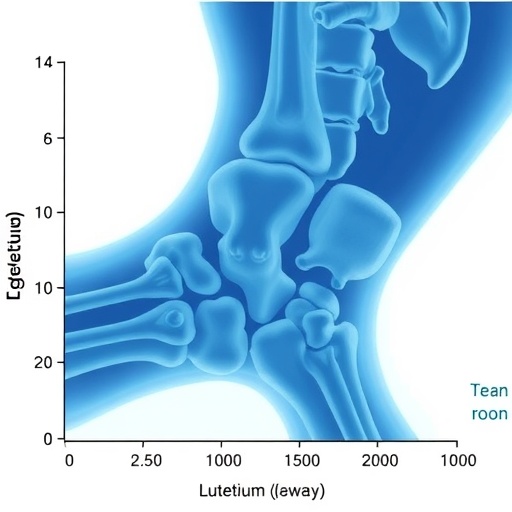
In the ever-evolving landscape of cancer care, the management of postoperative nutritional status in gastric cancer patients has emerged as a pivotal domain demanding urgent attention and refined strategies. A recent comprehensive evidence summary published in BMC Cancer delineates a scientifically rigorous framework aimed at revolutionizing home nutritional management for patients recovering from gastric cancer surgery. This systematic synthesis of the best available research offers healthcare professionals and patients an indispensable guide to optimizing nutritional outcomes beyond hospital walls, addressing complexities inherent in long-term recovery and quality of life enhancement.
Gastric cancer treatment often involves major surgical intervention, leaving survivors vulnerable to a complex constellation of nutritional challenges. These include malabsorption, altered digestive capacity, and persistent postoperative symptoms, which collectively jeopardize patient recovery trajectories. Traditional hospital-centric nutritional protocols, while critical during inpatient care, fall short in addressing the nuanced demands of home-based nutritional management once patients are discharged. The new evidence summary rigorously consolidates data drawn from a robust spectrum of studies — ranging from randomized controlled trials to expert consensus and qualitative research — to bridge this critical gap.
At the heart of this compilation lies a meticulous examination of 19 high-quality studies encompassing evidence-based guidelines, systematic reviews, randomized clinical trials, and expert consensus. Importantly, the authors adopted the ‘6S’ evidence resource model, a hierarchical approach to curating literature, ensuring that recommendations are grounded in the most reliable and clinically relevant data available. This methodological precision underscores the reliability and applicability of the insights for real-world clinical practice.
Central to the findings is the categorization of 27 best evidence statements into seven thematic domains which collectively represent the cornerstones of effective home nutritional management. These domains include nutritional monitoring and assessment, the role of multidisciplinary teamwork, comprehensive home nutritional interventions, tailored home nutritional support, proactive health promotion, effective symptom management, and structured post-discharge follow-up. This framework doesn’t merely restate known principles but integrates them within a cohesive, patient-centered model sensitive to the challenges inherent in transitioning from hospital to home settings.
One of the most compelling recommendations pertains to nutritional monitoring and assessment. The evidence emphasizes the necessity for structured, continuous evaluation using validated tools such as the Nutritional Risk Screening 2002 (NRS-2002). This tool enables healthcare providers to stratify risk accurately and tailor interventions accordingly. Moreover, the frequency of assessment is precisely calibrated, with biweekly monitoring proposed during the critical initial three months post-surgery—a period marked by heightened vulnerability to nutritional decline.
Interdisciplinary collaboration emerges as another keystone in the successful implementation of home nutritional management protocols. The evidence summary advocates for cohesive teamwork involving dietitians, oncologists, surgeons, nursing staff, and primary care providers. This multi-faceted approach ensures that nutritional care plans are comprehensive, adaptive, and responsive to the dynamic physiological and psychosocial needs of postoperative gastric cancer patients navigating home-based rehabilitation.
When it comes to home nutritional interventions, the research delineates a logical progression in the hierarchy of nutritional modalities. Patients are encouraged to prioritize regular food intake to meet caloric and nutrient demands initially. This is followed by the incorporation of oral nutritional supplements (ONS), which serve as vital adjuncts to address deficiencies and caloric gaps. Enteral nutrition (HEN) is reserved for those exhibiting severe malnutrition or who cannot meet their nutritional requirements orally. This staged approach respects the patient’s individual tolerance and promotes the most natural, sustainable means of nutrient assimilation before advancing to more invasive feeding techniques.
The study also shines a light on the often-overlooked dimension of health promotion and rehabilitation strategies. These encompass patient education on dietary patterns, physical activity, and behavioral modifications that synergistically enhance overall nutritional status. Empowering patients and caregivers with knowledge and practical skills is shown to significantly mitigate the risk of nutritional deterioration and supports sustained recovery.
An equally critical aspect involves symptom management, where the evidence provides actionable guidance on addressing postoperative adverse effects such as early satiety, nausea, dumping syndrome, and diarrhea. Timely identification and tailored interventions for these symptoms prevent their escalation and subsequent negative impact on nutritional intake. Notably, the study highlights the role of nursing and community healthcare providers in early symptom detection and management through proactive home visits and telehealth consultations.
Post-discharge follow-up is underscored as a non-negotiable pillar for maintaining momentum in nutritional recovery. The evidence advocates for structured, periodic follow-up that integrates nutritional reassessment, reinforcement of health promotion advice, and adjustment of nutritional support plans as needed. This continuity of care model mitigates the risk of care fragmentation and ensures that emerging nutritional challenges are swiftly addressed.
Importantly, the authors recognize that the translation of evidence into routine clinical practice warrants not only dissemination but dedicated implementation science strategies. Future research avenues are suggested to focus on elucidating contextual barriers, such as socioeconomic factors, healthcare system constraints, and patient adherence challenges, which often impede the effective deployment of theoretically sound nutritional interventions at home.
This comprehensive summary thereby serves as both a repository of current best practices and a springboard for future innovation. The synthesis recognizes the heterogeneity in patient needs and reinforces the imperative for personalized care pathways that harness interdisciplinary expertise, innovative assessment tools, and adaptive nutritional strategies.
In effect, this work marks a paradigm shift in oncological nutrition—one that transcends the hospital setting to embrace personalized, evidence-driven nutritional care at home, acknowledging the patient’s lived experience as central to recovery. Its rigorously developed framework equips clinicians and caregivers with a pragmatic, scientific blueprint to navigate the complexities of postoperative nutritional management while fostering patient empowerment and improved clinical outcomes.
As gastric cancer incidence continues to impose a substantial global health burden, optimizing postoperative home nutritional management represents not only a challenge but a transformative opportunity. By integrating cutting-edge evidence with clinical pragmatism, this summary is poised to catalyze advancements in patient-centered care models that meaningfully enhance survival and quality of life for gastric cancer survivors worldwide.
Subject of Research: Home nutritional management in postoperative gastric cancer patients
Article Title: Best practices for home nutritional management in postoperative gastric cancer patients: an evidence summary
Article References: Shanshan, W., Lian, W., Lu, D. et al. Best practices for home nutritional management in postoperative gastric cancer patients: an evidence summary. BMC Cancer 25, 1399 (2025). https://doi.org/10.1186/s12885-025-14608-9
Image Credits: Scienmag.com
DOI: https://doi.org/10.1186/s12885-025-14608-9
Keywords: postoperative gastric cancer, home nutritional management, nutritional assessment, oral nutritional supplements, enteral nutrition, symptom management, multidisciplinary teamwork, evidence-based guidelines
Tags: cancer care nutritional managementcomprehensive studies on gastric cancer nutritionenhancing quality of life post-gastric surgeryevidence-based guidelines for gastric cancergastric cancer postoperative challengeshome nutritional strategies for recoverylong-term recovery nutrition plansmalabsorption after gastric surgerymanaging digestive capacity after surgerynutritional support for cancer survivorsoptimizing nutritional outcomes post-surgerypost-gastric surgery nutrition tips




